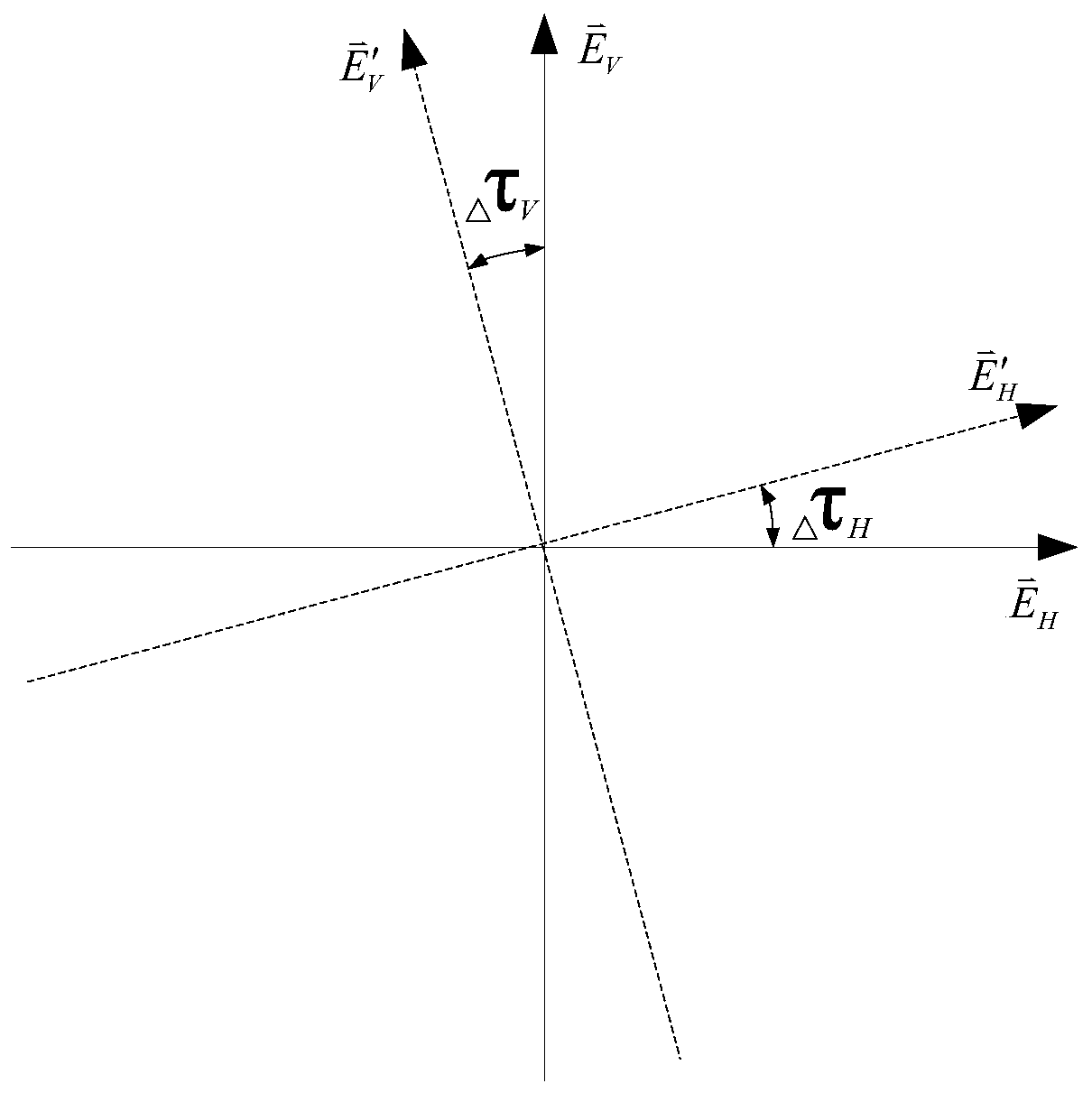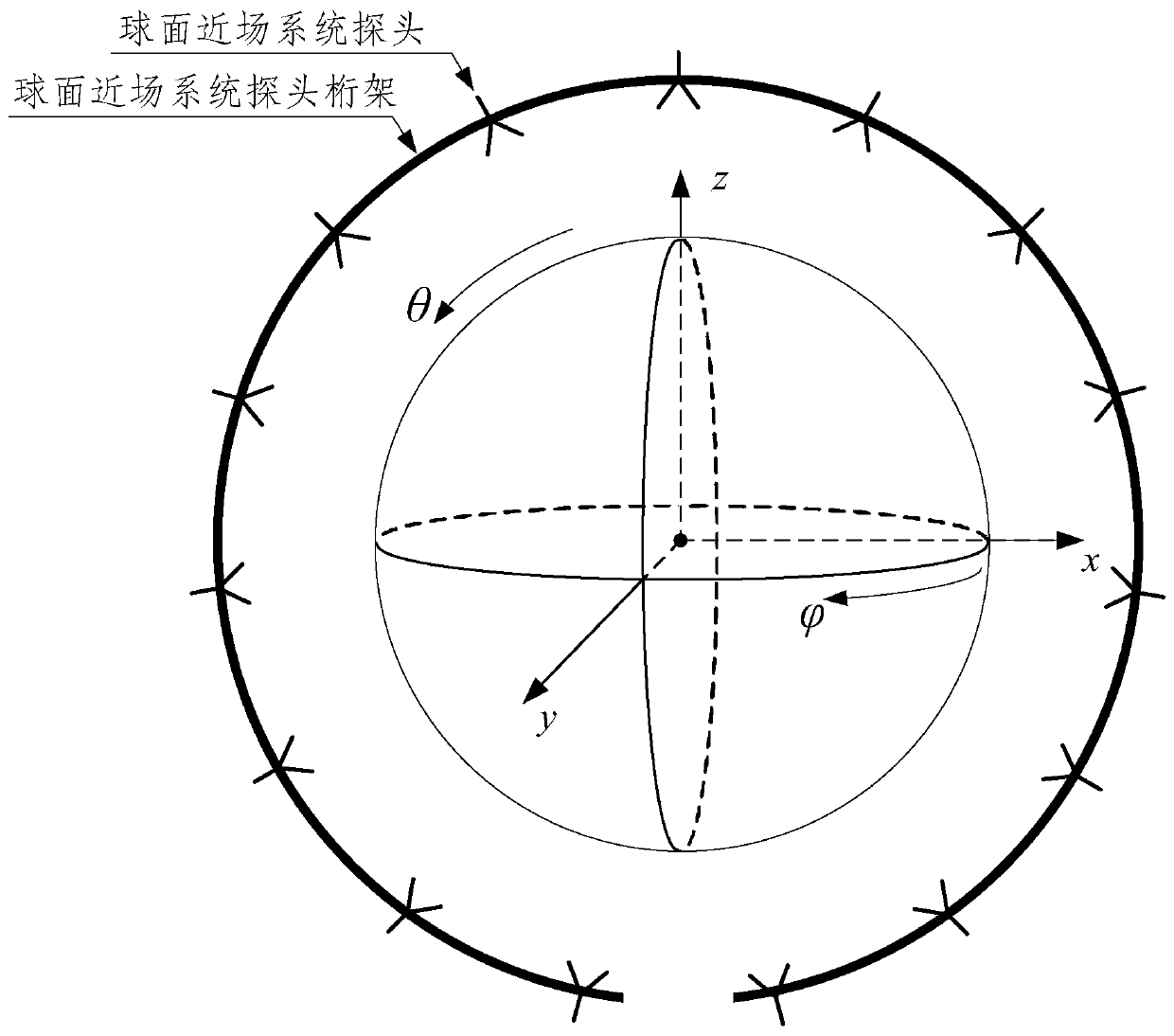A multi-probe spherical near-field cross-polarization correction method
A multi-probe, near-field technology, applied in the direction of instruments, antenna radiation patterns, measuring devices, etc., to achieve the effects of easy software integration, simplified erection tooling requirements, and shortened erection and measurement time
- Summary
- Abstract
- Description
- Claims
- Application Information
AI Technical Summary
Problems solved by technology
Method used
Image
Examples
Embodiment Construction
[0032] The present invention will be further described below in conjunction with the accompanying drawings.
[0033] A multi-probe spherical near-field cross-polarization correction method, comprising the following steps:
[0034] Step 1: Select an auxiliary antenna with a high cross-polarization ratio and a known polarization inclination angle. In order to ensure the measurement accuracy of the polarization deflection angle, the cross-polarization ratio of the auxiliary antenna should be better than 35dB. The working frequency band of the auxiliary antenna should cover all the frequency points to be measured by the antenna under test, and usually choose a pyramid horn antenna or a ridge horn antenna;
[0035] Step 2: Set up the auxiliary antenna at the origin of the coordinate system of the multi-probe spherical near-field measurement system, image 3 It is a schematic diagram of the coordinate system of the multi-probe spherical near-field measurement system. The coordinat...
PUM
 Login to View More
Login to View More Abstract
Description
Claims
Application Information
 Login to View More
Login to View More - R&D
- Intellectual Property
- Life Sciences
- Materials
- Tech Scout
- Unparalleled Data Quality
- Higher Quality Content
- 60% Fewer Hallucinations
Browse by: Latest US Patents, China's latest patents, Technical Efficacy Thesaurus, Application Domain, Technology Topic, Popular Technical Reports.
© 2025 PatSnap. All rights reserved.Legal|Privacy policy|Modern Slavery Act Transparency Statement|Sitemap|About US| Contact US: help@patsnap.com



